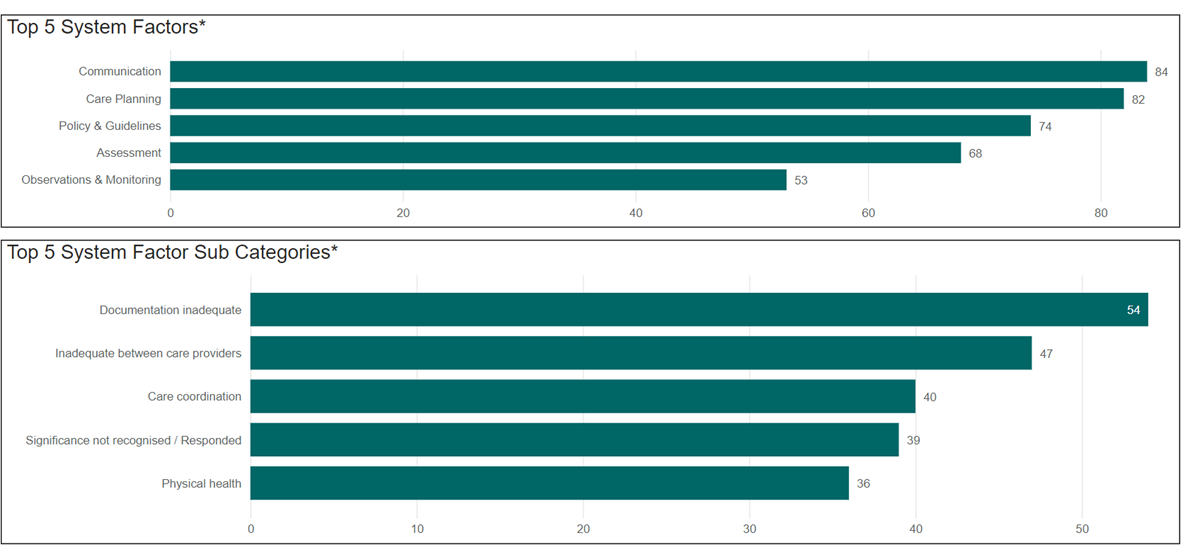Clinical Management SAER Review Sub-Committee
The Clinical Management SAER sub-committee classifies each SAER report received by the NSW Ministry of Health using a standard taxonomy. The classification taxonomy is revised as emerging issues and clinical practice changes are identified.
During the reporting period, the Clinical Management sub-committee reviewed and themed 143 SAER reports. The majority of these SAERs (92 per cent, n= 131) were confirmed as Harm Score 1. The remaining 8 per cent (n=12) were confirmed as a Harm Score 2.
The SAERs reviewed by the Clinical Management sub-committee identified the top 5 human factor elements related to:
- Loss of situational awareness, relates to the focus on one aspect of care, irrelevant information, poor prioritisation and planning of care
- No human factors identified, following review of the SAER report
- Knowledge based errors, that are caused by gaps in staff skills or knowledge
- Cognitive based errors, involving the failure to understand, process or act appropriately on available information despite adequate education and knowledge. This may include following the wrong clinical pathway.
- Skill-based – poor task execution, relating to failures in carrying out actions of a task, where the process was correct, but the execution was not.
Clinical risk factors relate to conditions or situations that are considered a direct cause, or contributing factor, to the outcome of an incident. Co-morbidities – physical remains the most commonly selected risk factor in clinical management SAER reports since it was introduced to the classification system in 2018. The top risk factors identified within SAERs related to:
- Co-morbidities – physical, refers to the presence of two or more overlapping conditions in the same person. Examples may include diabetes, cardiovascular issues and cancer
- Deteriorating patient – failure to recognise, patient deterioration was not recognised
- Deteriorating patient – failure to escalate, where the patient was deteriorating and there were delays and/or failure to escalate care
- Confusion/Delirium, where the patient experienced disturbances of consciousness, attention, cognition and perception that developed over a short period of time (usually hours or days).
- Acute coronary syndrome (ACS), the spectrum of acute clinical presentations resulting from underlying coronary heart disease, including heart attack and angina
- Medication – All other, includes noting the actual medication name involved in the incident
An overview of Clinical Management SAER data is presented below:
Figure 9.

*Multiple factors can be applied to each SAER
Review of clinical management SAER reports identified Communication and Care Planning as the most frequently occurring system issue affecting care provision.
Communication consists of four sub-categories which includes documentation of a patient’s condition was inadequately documented within medical records and inadequate communication between care providers.
Figure 10.

*Multiple factors can be applied to each SAER
